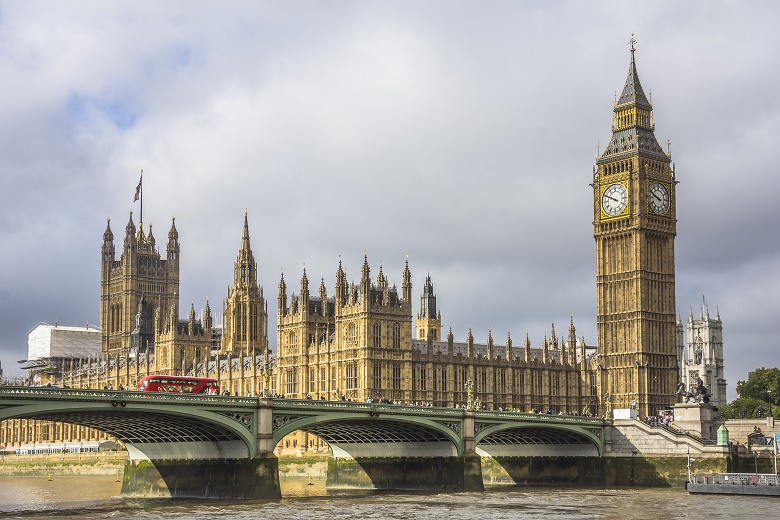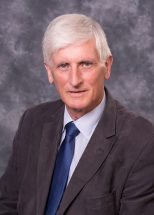
As Australia gears up for the fifth generation of mobile networks, UK local authorities are partnered with the private sector to deploy 5G technology to save money and integrate public services within cash-strapped services such as health care.
One example is Liverpool City Council, which has been working with technology firms as well as local public hospitals and universities on a £5.4m ($AU9.5m) 5G health and social care testbed project.
For Rosemary Kay, project director for Liverpool 5G Health and Social Care, 5G is a way to solve some of the problems around adopting and integrating technology within health and care services.

“Here in the UK it’s partly about providing more support so people can stay in their own homes for longer and avoid going into hospital,” she says. “And if they do, then helping them go home as fast as possible, which aids their recovery and independence.”
Many Liverpudlians, particularly those on lower incomes, don’t have broadband connectivity – a major stumbling block for digital transformation of public services.
Instead, one Liverpool ward is putting nodes and Wi-Fi units on lamp posts that “talk” to its CCTV network, creating a 5G mesh network that connects homes and is free to use for health and social care purposes.
“That gets us past the problem of affordability and accessibility; the idea is the council will own that network,” Kay says. “Rather than money just moving around the system and going on connectivity charges.”
Where are the savings?
Previously, the council or the National Health Service (NHS) would have to pay for costly SIM-enabled devices. Some healthcare gadgets, in addition, need to transmit high volumes of expensive-to-download data, such as advice videos and so on.
The testbed is also developing products to connect people with 5G – addressing loneliness – as well improving treatment and service delivery within hospitals and care homes. It’s not a pilot: they’re working with live contracts, already seeing service improvements and cost savings.
“One of my mantras is that if we cannot show it is having an impact on health and care services, it’s not for us,” Kay says.
Liverpool is helped by the wide range of project partners, including the eHealth Cluster which acts as a more impartial adviser between public and private sector groups, and the degree of independence from UK Government it enjoys as a result of its devolution deal.
Data and projections will inform a detailed benefits realisation package published around late September. “But we’re already showing savings on things like remote medication management,” Kay says.
The Liverpool project is part of the UK Department for Culture, Media and Sport’s £200m ($AU354m) 5G trials program. The Infrastructure and Projects Authority (IPA) says 5G will boost sectors including manufacturing, health, logistics, smart communities, agriculture and tourism.
No delays needed
Other 5G testbeds supported by the department include a Worcestershire County Council (WCC)/enterprise consortium which is trialling factory applications of robotics and augmented reality. 5G is supporting, for instance, two trouble-shooting applications for Worcester Bosch. More data can be transferred faster, with little time lag (latency), cutting response times to changes in production.

WCC’s cabinet member for economy and infrastructure, councillor Ken Pollock, says in a statement that the aim of these 5G factory trials is to help “keep the county open for business”, with the project so far suggesting a two percent boost to productivity is possible in some applications. Once again, private sector partnerships are key.
Michael Deittrick, chief digital officer at US tech provider DMI says 5G can, for instance, support analytics for asset tracking, fleet management and predictive maintenance, assisting supply chain and transport companies to use vehicles more efficiently, optimising routes and improving fuel economy.
“Analytics over 5G means you can understand what is being consumed on devices at the outer edge of a network,” he says. “For example, if you’re walking along the street in Soho or the Las Vegas Strip, 5G connectivity will force businesses in that location to collaborate in response to people’s interactions and reactions.”
Future service suggestions
The UK is also piloting other 5G trials that help farmers monitor and manage their herds and crops, for tourism, and to connect rural communities in remoter areas such as the Orkney Islands, using network slicing to efficiently separate different uses and applications.
One trial allows dairy cows fitted with 5G-enabled collars to be monitored remotely and even open the gates to the shed themselves at milking time; another has a drone and autonomous tractor send high-definition (HD) images of field crops and weeds over to a core network that uses artificial intelligence (AI) to analyse the data and tell the tractor when and how to spray.
It’s not hard to see how such applications might prove useful in the remote Australian bush. Yet deploying 5G is expensive: many more base stations are typically needed, for a start. This may pose a riddle for government funding which may only be partly solved by teaming up with the private sector.
*Fleur Doidge reports for Government News from the UK.
Comment below to have your say on this story.
If you have a news story or tip-off, get in touch at editorial@governmentnews.com.au.
Sign up to the Government News newsletter.
This article is big on irony, it deals with accessibility to the health system for low income people but completely neglects the potential dangers to peoples health from the same 5G network. Personally I would prefer better health with no complications from radio active waves and be disadvantaged by lesser capacity technology.